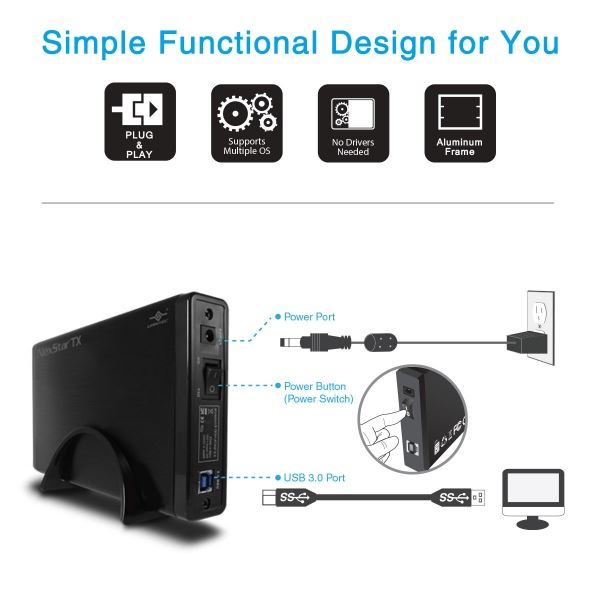The NST-328S3-BK is a simple well design enclosure ready for 3.5” SATA HDD. This new TX series enclosure offers sleek aluminum casing for heat protection and minimize vibration. This portable enclosure features UASP for enhanced speed, high data transmission thru USB Bridge, low power consumption and Standard USB Type A interface for connecting to any USB port easily. It offers good design, speed and functionality.
NOTE: This product is designed to save energy. When it is not connected to a working system, it will not power ON. After installing your hard drive into the enclosure, make sure your system is powered ON first, securely connect this enclosure to the system USB 3.0 port using the provided USB 3.0 cable and to the enclosure before powering ON the enclosure.

Model: NST-328S3-BK
Device Support: SATA I/II/III SSD or Hard Drive
Device Size: 3.5 inches Hard Drive
Internal Interface: Standard SATA
External Interface: USB Type B
Interface Cable: USB Type A to Type B
USB Cable Length: 800mm
HDD Capacity: Up to 16TB click here for detail
Power Supply: AC Adapter, Output: 12VDC, 2A click here for detail
Material: Aluminum/Plastic
OS Support: Windows 7/8/10/11 32-bit and 64-bit; OS X 10.6, or greater
Product Dimension: 203 x 115 x 31 mm (without stand) / 8 x 4.5 x 1.2 inches
Product Weight: 186g / 6.6 ozs
System Requirements:
Microsoft Windows XP, Vista, 7, 8, 8.1, 10, 11
OS X 10.6 or greater
USB 1.1 or 2.0 or 3.0 Equipped System
For USB 3.0 Speeds, the System Must Support USB 3.0 Specifications
What's included: Vantec TX 3.5” Hard Drive Enclosure, USB 3.0 cable (USB 2.0 compatible), External power supply, Enclosure Stand, Quick Install Guide, Installation Screws, Screw driver
UPC: 844767022390
EAN: 4716872102761